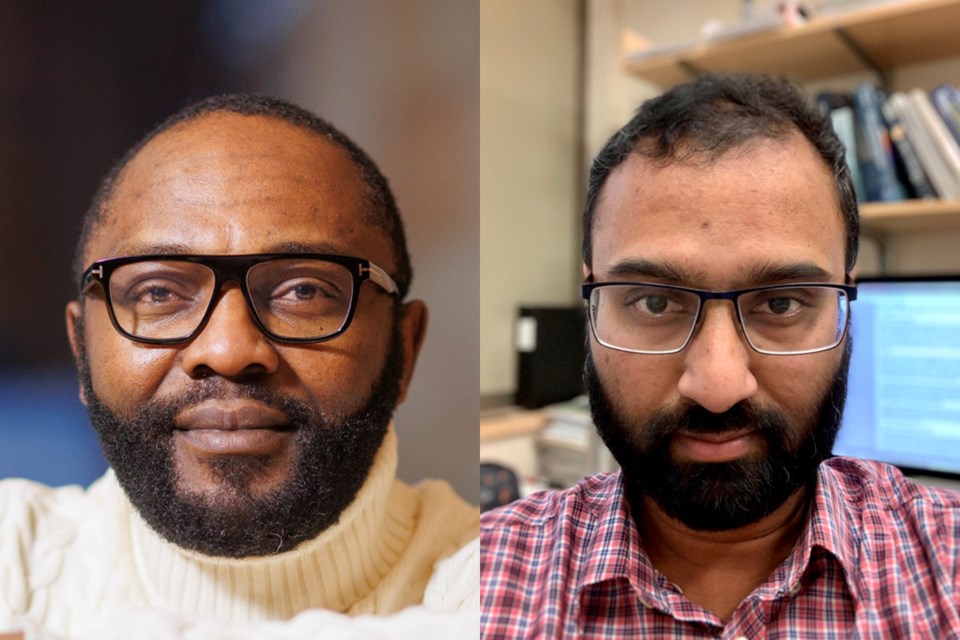SASKATOON — Researchers working with the University of Saskatchewan (USask) received more than $7 million in this round of Canadian Institute for Health Research (CIHR) funding — the most that USask researchers have ever received in a single round.
Dr. Darcy Marciniuk (MD), associate vice-president, research, at USask and the university’s CIHR delegate, called the record-setting round of funding a significant achievement for the researchers working on new and exciting projects.
“It’s clear that our researchers and their teams have been working hard because you just don’t snap your fingers and apply for a grant and get it,” Marciniuk said. “So, to do so well, and to do so well compared to other institutions in Canada, is great.”
Dr. Humphrey Fonge (PhD) and Dr. Maruti Uppalapati (PhD) with the College of Medicine received $979,200 for their research project to develop new diagnostics and therapeutics for pancreatic and ovarian cancer. Dr. John Gordon (PhD) of the Department of Respirology is also a co-applicant of the project.
Titled “Priming MUC-16 positive ovarian and pancreatic cancer cells for immunotherapy using an alpha particle labeled radioimmunoconjugate,” the research involves targeting a prevalent protein on cancerous cells to better direct cancer treatments and improve diagnosis.
Using intravenous delivery, a new compound developed by Fonge and Uppalapati’s labs targets a protein called MUC-16 on cancer cells. The protein is “overexpressed” on the surface of cancer cells in cases of ovarian and pancreatic cancer, and its abundance — which causes the cancer to grow rapidly in comparison with healthy cells and develop resistance to available treatments — also serves as a biomarker which their new diagnostic and therapeutic compounds target.
“You can use either deliver radiation or cytotoxic compounds that will either help light up the cancer and make it a better diagnostic, or, depending on the type of attachment we deliver to that particular cancer cell, we can also deliver very potent therapeutics,” Fonge said.
The distinct biological marker will allow medical professionals to specifically target cancerous cells with materials to either highlight those cells for diagnostic purposes or deliver treatment to those cells.
“We make antibodies, and we can make them bind to any protein of interest,” Uppalapati said. “We have been labelling them with radiation, and then targeting them directly to the cancer cells.”
Both Fonge and Uppalapati have successfully received CIHR funding for previous projects. Both researchers credited the College of Medicine through the College of Medicine Research Awards (CoMRAD) for providing their project with the funds to get started, and Uppalapati said funding from CIHR will help elevate this kind of work to the next level.
“Without having this funding, it’s impossible to conduct this research and take it to a stage where we can take it into clinical trials,” Uppalapati said. “It’s really critical to have this funding to support trainees … and have the resources and materials for us to move forward.”
Current effective cancer treatments like chemotherapy affect large areas of the body and can potentially have serious side effects. In addition, most patients become resistant to chemotherapy.
If this new diagnosis and treatment method can be taken to further stages, Fonge said it could drastically improve survival of these patients while leading to additional cost savings in health care, such as the avoidance of other unnecessary diagnostic procedures and less effective drugs.
As Fonge puts it, he and Uppalapati are looking to solve real world problems with their work, and this novel treatment does exactly that.
“We are only excited when this type of project would get into the arms of patients,” he said. “If we can get that data, and then that data helps us get more funding, and we eventually take it to patients, that is when the real benefit is.”
CIHR “supports excellence across all four pillars of health research: biomedical; clinical; health systems services; and population health.”
Below are the other USask projects and nominated principal investigators who received funding in this round:
Dr. Alexandra King (MD) – Kiskemisowin (the gathering of knowledge to remind you who you are): Co-creating Community- and Nation-led digital archives for Indigenous health and wellness knowledge promotion and preservation – $1,656,224
Dr. Eric Price (PhD) – Tumour targeted, radiolabeled, mimetic nanovesicle theranostics for imaging and treating head and neck cancer – $963,900
Dr. Sarah Oosman (PhD) – Kehokatowin ~ Northern Saskatchewan Métis gathering here and there to age well in place(s) – $960,075
Dr. Alyson Kelvin (PhD) – Regulation of coronavirus cross-reactivity and immune durability for pan-coronavirus vaccine development – $906,526
Dr. Solina Richter (DCur) – Unveiling the Silence: Developing and Evaluating a Feasibility Study to Improve Access and Utilization to Sexual and Reproductive Health Services for Kayayei (Head Porters) in Ghanaian Markets – $868,276
Dr. Cory Neudorf (MD) – Multilevel estimation of the relative impacts of social determinants on income-related health inequalities in urban Canada: Toward a new Canadian Social Determinants Urban Laboratory – $650,251
Dr. Gary Groot (MD) – Understanding Hip and Knee Integrated Care Pathways: A Patient-Oriented Rapid Realist Review to Inform a New Saskatchewan Pathway – $100,000
Dr. Joyce Wilson (PhD) – Reverse genetic analysis of mechanisms underlying convergent evolution of SARS-CoV-2 variants of concern and accessory protein functions – $100,000—
— Submitted by USask Media Relations
Don't count on social media to deliver news to you. Keep local news a touch away by bookmarking SASKTODAY.ca's homepage at this link.
Here's why you should bookmark your favourites.




